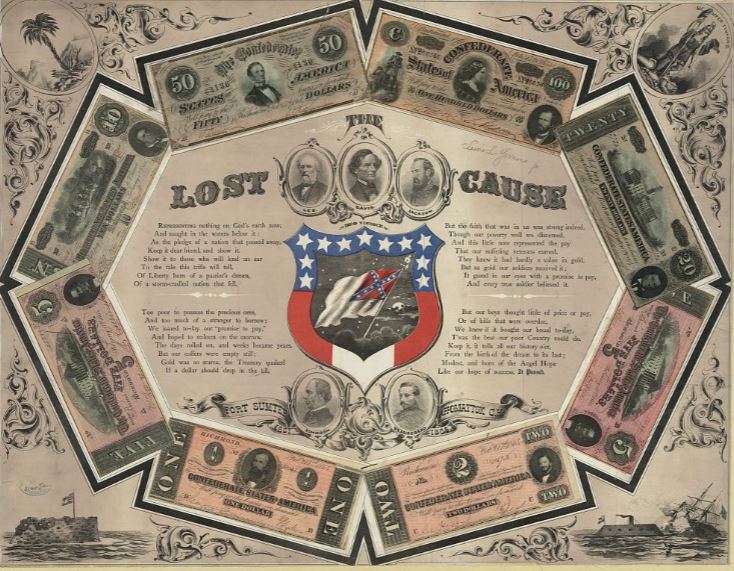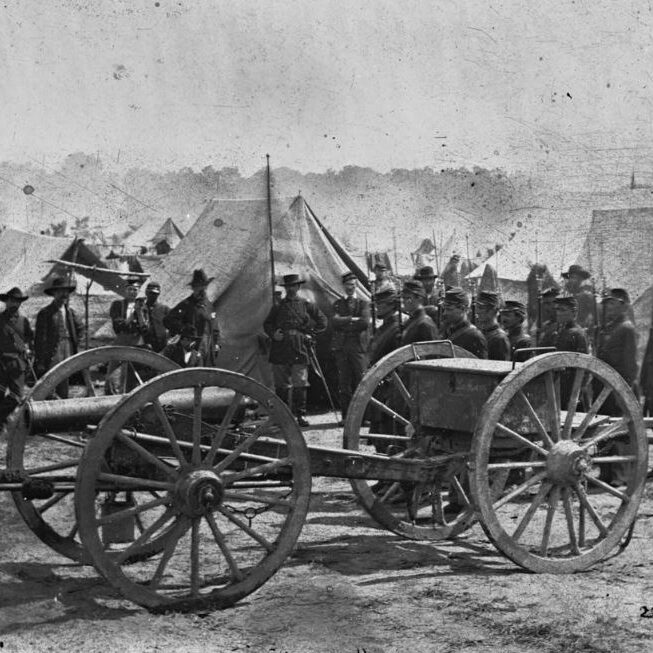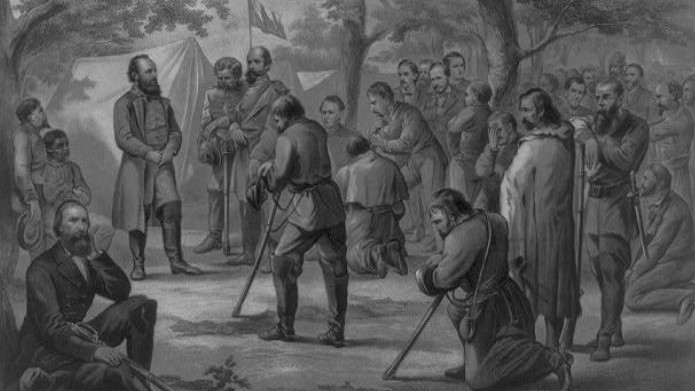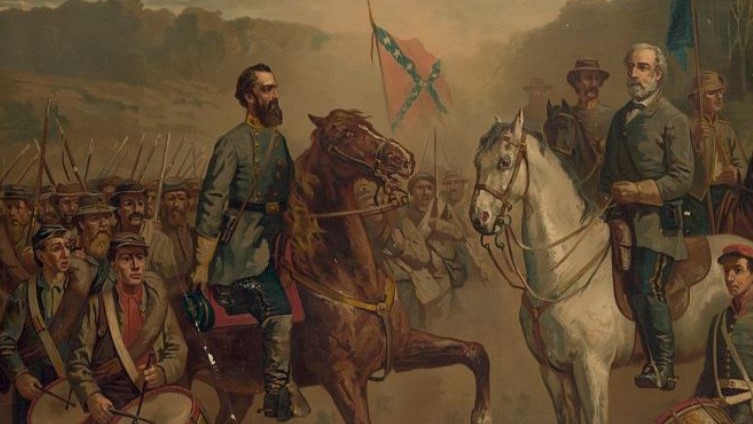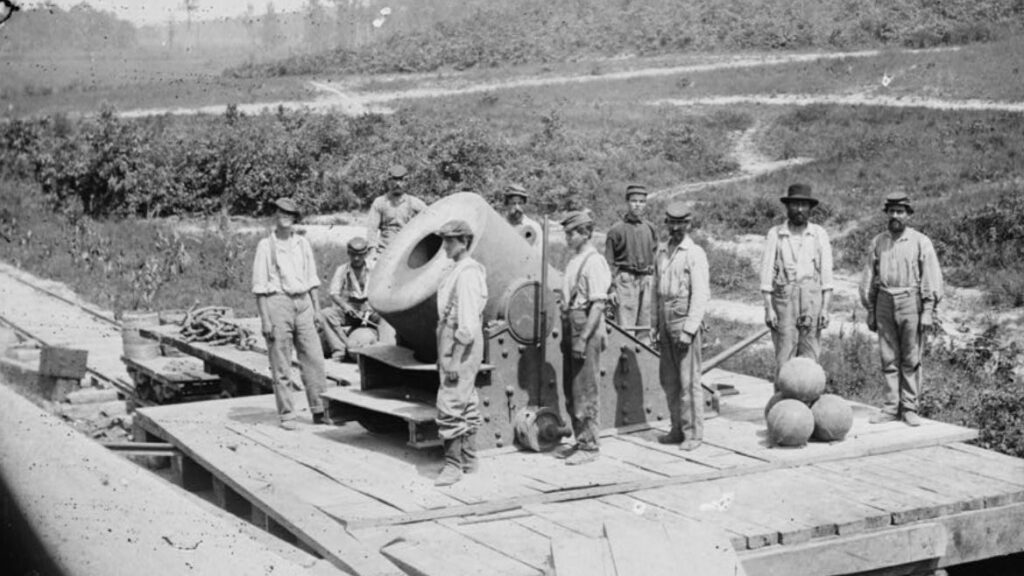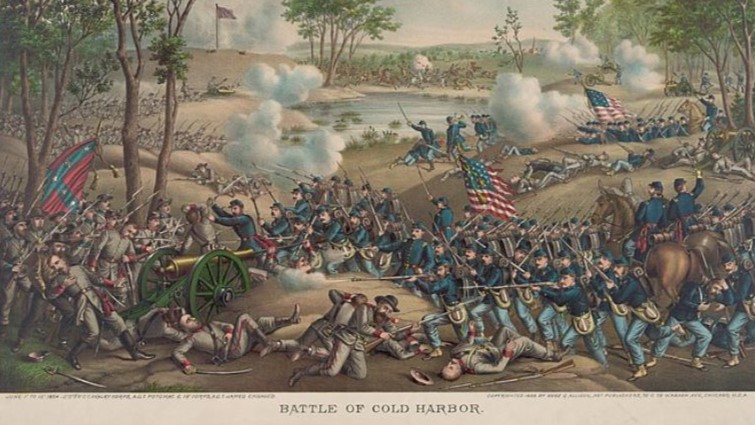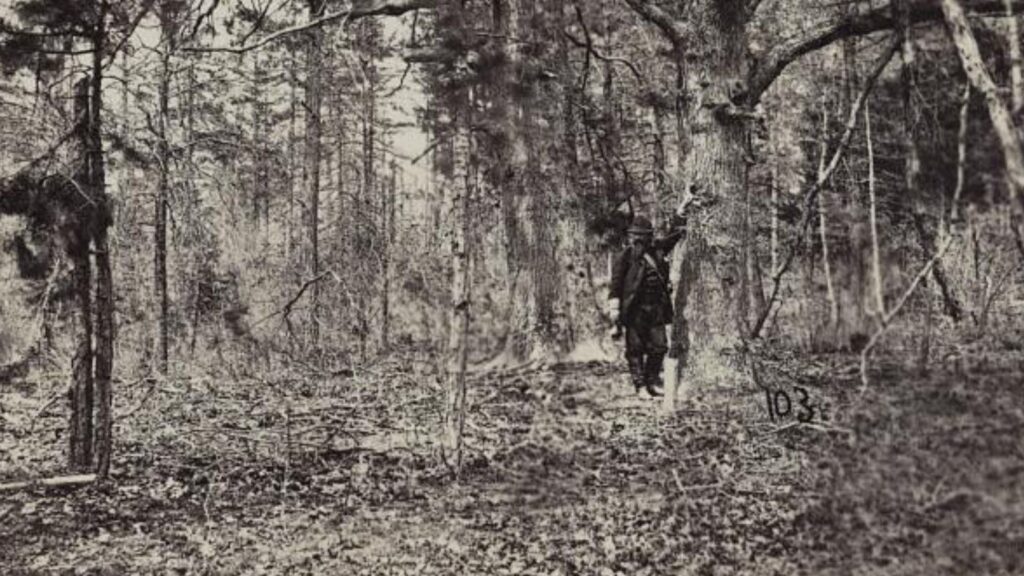The Lost Cause of the Confederacy refers to a historical myth that emerged in the aftermath of the American Civil War (1861-1865).
Originating in the late 19th century, this narrative sought to reshape the Southern perspective on the war, portraying the Confederacy and its leaders in a more favorable light. The Lost Cause myth emphasized the valor of Confederate soldiers, but downplayed the role of slavery as a cause for the war,
This blog explores the origins of the Lost Cause narrative, shedding light on its implications for understanding the nation’s complex past.
- 1. State Rights and Slavery in Prelude to Civil War
- 2. Secession and Slavery
- 3. The Origins of the Lost Cause Myth
- 4. The Notion of Northern Aggression
- 5. United Daughters of the Confederacy and the Lost Cause
- 6. The Dunning School and The Lost Cause Myth
- 7. The Influence of the Lost Cause Myth on Jim Crow
- 8. The Stubborn Persistence of the Lost Cause Mythology
- Further Reading
1. State Rights and Slavery in Prelude to Civil War
In the intricate lead-up to the Civil War, the intertwining concepts of state rights and slavery fueled regional tensions. These issues contributed and were central to the causes of the Civil War.
State Rights: A Shield Against Centralized Power
Advocates for state rights, rooted in the Jeffersonian vision, saw states as sovereign entities guarding against an overreaching central government.
The desire for self-governance motivated states to emphasize their rights to make decisions independently of federal interference.
Slavery: The Economic Foundation of the South
Slavery was deeply embedded in the Southern economy. This created a socio-economic structure that prompted Southern states to safeguard what they viewed as essential to their prosperity.
While some in the South justified slavery using economic necessity, others clung to warped notions of racial superiority, further entangling the institution with the Southern way of life.
Legislative Battles: As debates on the expansion of slavery intensified, clashes between federal authority and state autonomy intensified. The federal government tried to balance free and slave states, while Southern states argued they had the right to decide for themselves whether to allow slavery.
The Missouri Compromise: When Missouri applied for statehood as a slave state in 1819, it threatened to upset the equal number of free and slave states.
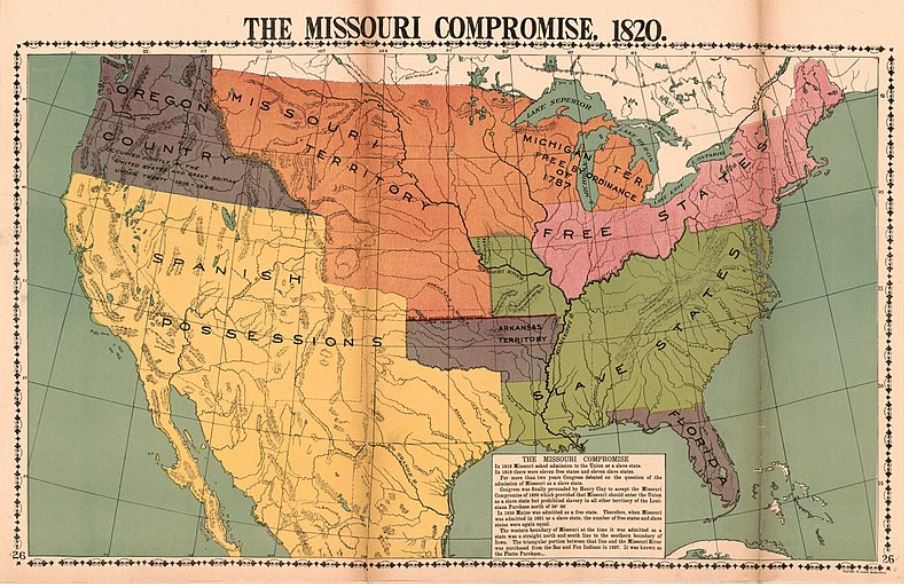
Congress passed the Missouri Compromise, admitting Missouri as a slave state while carving out the free state of Maine from Massachusetts. The compromise also established a boundary line prohibiting slavery north of the 36°30′ parallel. This maintained the balance, but southerners increasingly resented federal limits on slavery’s expansion. The clash highlighted the fragility of the young nation’s unity.
Expansion West: As the United States expanded west in the 1800s, debates arose over whether new territories and states would allow slavery.
This conflict came to a head with the annexation of Texas in 1845. Texas won independence from Mexico in 1836 and legalized slavery.
The U.S. initially declined to annex Texas, but pro-slavery arguments won out under President Polk. Texas was admitted as a slave state in 1845, upsetting the balance between free and slave states.

Tensions over Texas expansion demonstrated how the slavery debate increasingly dominated westward growth, with pro-slavery forces pushing for the institution’s spread regardless of federal limits. This ultimately led the nation closer to disunion over slavery’s future.
2. Secession and Slavery
Southern states, feeling their economic and cultural foundations threatened, invoked state rights as a justification for secession.
The Confederate Constitution was modeled after the United States Constitution, but it also included several key differences that reflected the South’s commitment to slavery.
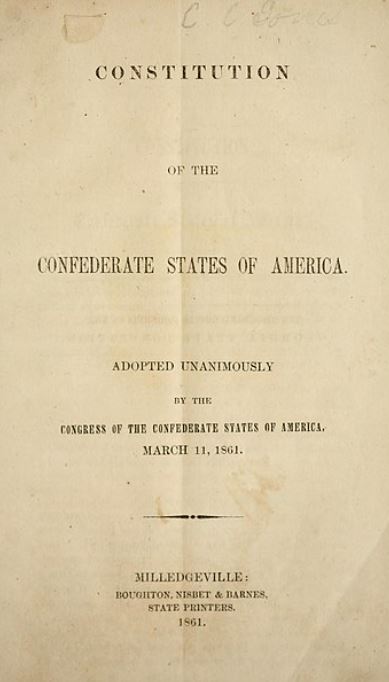
One of the most important differences was the addition of a clause protecting the right to own slaves.
The Confederate Constitution also made it more difficult for the federal government to interfere with slavery, such as by banning the importation of new slaves. These changes reflected the South’s view that slavery was essential to its economy and way of life.
The Confederacy’s commitment to slavery was also reflected in its state constitutions.
Slavery within the Secession Statements
Several of the Southern states explicitly mentioned slavery as a reason for seceding from the Union in their formal declarations of secession:
- Mississippi’s declaration stated “Our position is thoroughly identified with the institution of slavery– the greatest material interest of the world.”
- South Carolina’s declaration cited “an increasing hostility on the part of the non-slaveholding States to the institution of slavery” as a motive for secession.
- Texas declared “She [Texas] was received as a commonwealth holding, maintaining and protecting the institution known as negro slavery– the servitude of the African to the white race within her limits.”
- Georgia’s declaration stated “For the last ten years we have had numerous and serious causes of complaint against our non-slave-holding confederate States with reference to the subject of African slavery.”
So while the defense of states’ rights and dissatisfaction with the outcome of the 1860 election were also listed in some declarations, several of the Southern states explicitly and unambiguously identified the protection of slavery as a prime reason for secession at the start of the Civil War.
The declarations provide clear evidence of slavery’s central role in causing the conflict.
3. The Origins of the Lost Cause Myth
The term “Lost Cause” was coined by Edward Pollard, a journalist who was a strong supporter of the Confederacy.

In 1866, Pollard published a book titled “The Lost Cause: A New Southern History of the War of the Confederates.” This book aimed to provide a sympathetic Southern interpretation of the Civil War.
Pollard and other promoters of the Lost Cause myth sought to reframe the Confederacy’s motivations and the meaning of its defeat.
They claimed the Southern states had seceded and fought not to defend slavery, but to uphold Constitutional rights and state sovereignty against Northern aggression.
In the aftermath of a bloody national conflict that left over 600,000 dead, the myth served a unifying purpose. It allowed white Southerners to find meaning and dignity after a catastrophic defeat.
This narrative portrayed the Confederacy as undertaking a noble, patriotic struggle to defend the original intent of the Founding Fathers.
It downplayed the central role of slavery in spurring secession.
The Lost Cause depicted Confederates as heroic underdogs fighting overwhelming industrialized Northern forces, not as rebels defending an unjust slave society.
This myth was propagated not just by bitter ex-Confederates, but by many mainstream historians like Woodrow Wilson. The reconciliationist elements of the Lost Cause facilitated reunion between North and South.
The dangers emerged when the myth obscured the centrality of slavery to the Civil War.
4. The Notion of Northern Aggression
One of the key elements of the Lost Cause mythology is the notion that the Civil War stemmed from unjust “Northern aggression” against the Southern states.
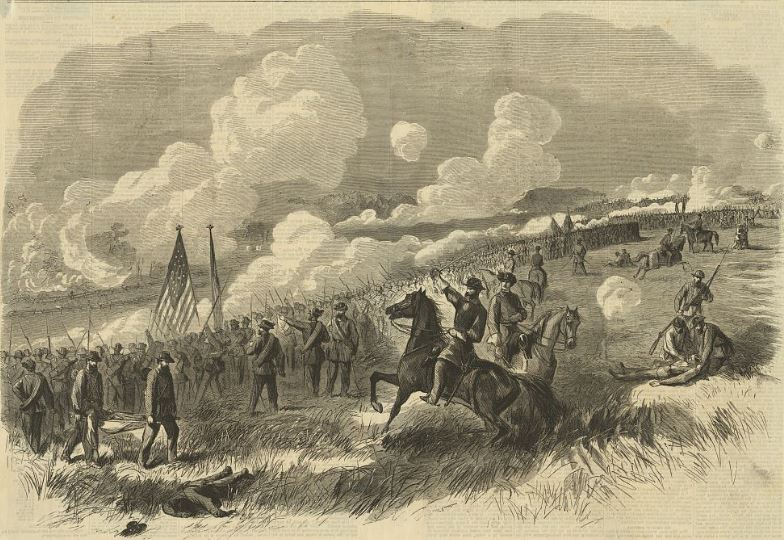
This narrative portrays the Confederacy as merely defending itself against intolerable Northern infringements on the South’s rights.
Upon closer examination, however, the validity of the term “Northern aggression” becomes more ambiguous.
The Confederates fired first: On April 12th, Confederate forces opened fire on Fort Sumter, marking the official start of the American Civil War. The Confederate artillery initiated the bombardment of Fort Sumter, aiming to force the surrender of the small Union garrison stationed within the fort.

The Anaconda Plan outlined by General Winfield Scott, for example, was a proposed strategy for blockading and slowly constricting the South – but it was not enacted before the Confederacy fired on Fort Sumter.
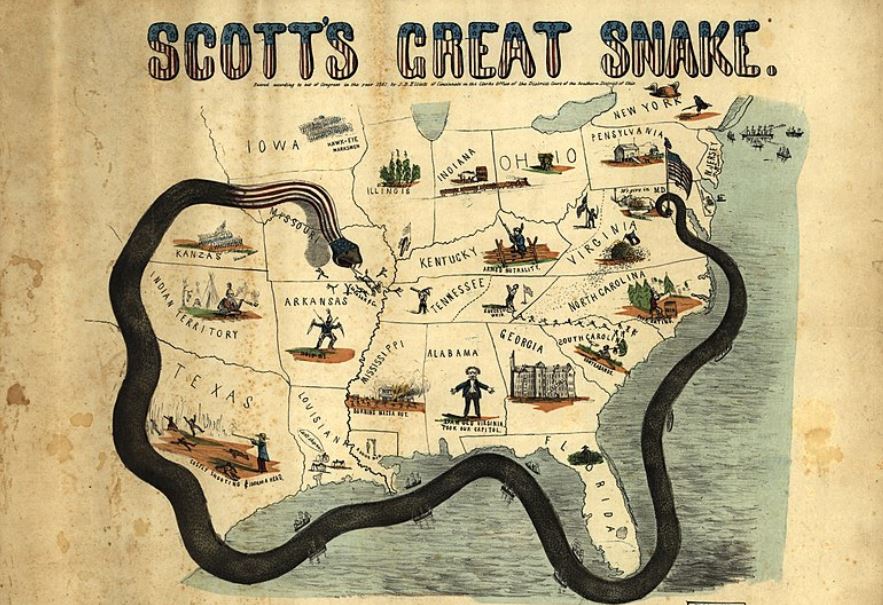
The Union’s “total war” tactics later in the conflict, though devastating, were arguably justified when facing an active rebellion that threatened the nation’s very existence. Characterizing the North as the sole aggressor obscures complex dynamics that led to secession.
Fundamentally, claims of Northern aggression overlook the South’s defense of slavery as the root cause of the conflict.
5. United Daughters of the Confederacy and the Lost Cause
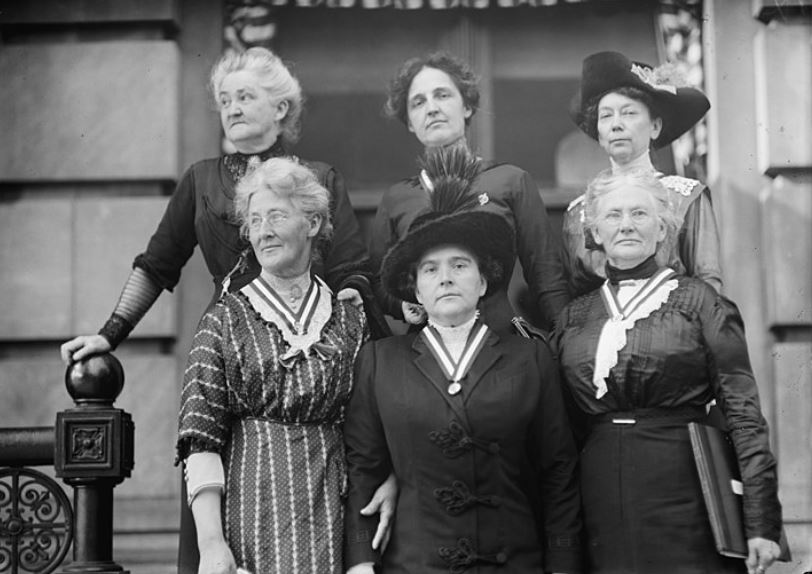
Founded in 1894, the United Daughters of the Confederacy proved pivotal in pushing the Lost Cause mythology through the early 20th century.
This influential Southern women’s group aimed to commemorate the Confederacy by funding monuments, sponsoring essay contests, and shaping curricula.
The thousands of Confederate monuments erected across the South during the Jim Crow era, including in courthouse squares and state capitols, were largely funded by the United Daughters of the Confederacy.
These monumental landscapes cemented the Lost Cause view of gallant Southern soldiers defending a noble but doomed struggle.
The United Daughters of the Confederacy also sought to retell the history of the Civil War through a Southern lens.
They pressured textbook publishers to present information downplaying slavery’s role in causing the war and glorifying the Confederacy.
As segregation came under increasing scrutiny after World War 2, the United Daughters of the Confederacy staunchly defended Confederate symbols as matters of heritage and honorable tradition. They condemned critics who highlighted the racist and insurrectionist connotations of Confederate imagery.
Well into the 21st century, the United Daughters of the Confederacy continues honoring its understanding of the Civil War – one that minimizes slavery and applauds the gallantry of those who fought for Southern independence.
While certainly sincere in cherishing their ancestors, the United Daughters of the Confederacy’s efforts have often come at the expense of historical accuracy and racial reconciliation.
6. The Dunning School and The Lost Cause Myth
The Dunning School and the Lost Cause Myth are deeply intertwined, both playing significant roles in creating a distorted and whitewashed narrative of American history, particularly regarding Reconstruction and the Confederacy.
The Dunning School was a group of historians led by William Archibald Dunning in the late 19th and early 20th centuries whose interpretation of Reconstruction was highly influential, dominating popular and scholarly understanding for decades.
Key themes of the Dunning School include:
- The failure of Reconstruction, emphasizing inefficiency and corruption while largely ignoring Black achievements and challenges;
- Black incompetence, portraying Black participation in politics as detrimental to justify disenfranchisement; and
- White victimhood, minimizing the Confederacy’s role in starting the Civil War and romanticizing its ideals.
- Downplaying the evils of slavery and presenting secession as a legitimate response to federal overreach.
The Dunning School offered academic validation to the Lost Cause Myth, giving it a veneer of historical accuracy.
This narrative served to justify white supremacy and Jim Crow segregation, painting Reconstruction as a failure and Black participation as detrimental.
7. The Influence of the Lost Cause Myth on Jim Crow
The Lost Cause myth sought to erase the horrors of slavery, romanticize white Southerners, and blame Black Americans for their own misfortune. This myth provided the fuel to influence the creation of Jim Crow – a system of legalized racial segregation and discrimination that existed in the Southern United States from the late 19th century until the mid-20th century.
Jim Crow originated from the seeds of white supremacy deeply embedded in the South’s social fabric.
The Civil War, fueled by the Confederacy’s desperate attempt to preserve slavery, left deep wounds. Defeated but unrepentant, many white Southerners clung to the Lost Cause narrative, a revisionist history.
This retelling served multiple sinister purposes:
- Justifying white dominance: By portraying the Confederacy as fighting for states’ rights and white Southern heritage, the Lost Cause glossed over the ugly truth – their fight was to keep Black people enslaved. This narrative gave white Southerners a reason to continue subjugating Black communities, even after the Confederacy’s defeat.
- Demonizing Reconstruction: The Lost Cause narrative depicted Reconstruction, the period aimed at integrating Black Americans into society, as a disastrous failure and blamed Black participation for its problems. This skewed perception served as a pretext to disenfranchise Black voters and dismantle Reconstruction efforts, effectively reversing any progress made towards racial equality.
- Erasing Black agency: The Lost Cause myth silenced the voices and experiences of Black Americans, framing them as passive recipients of a failed experiment rather than active participants in their own struggle for freedom. This erasure further marginalized Black communities and fueled the illusion of white superiority.
This warped historical lens provided the perfect justification for Jim Crow’s oppressive policies.
Segregation in public spaces, discriminatory laws, and voter suppression tactics – all found support in the distorted narrative of the Lost Cause.
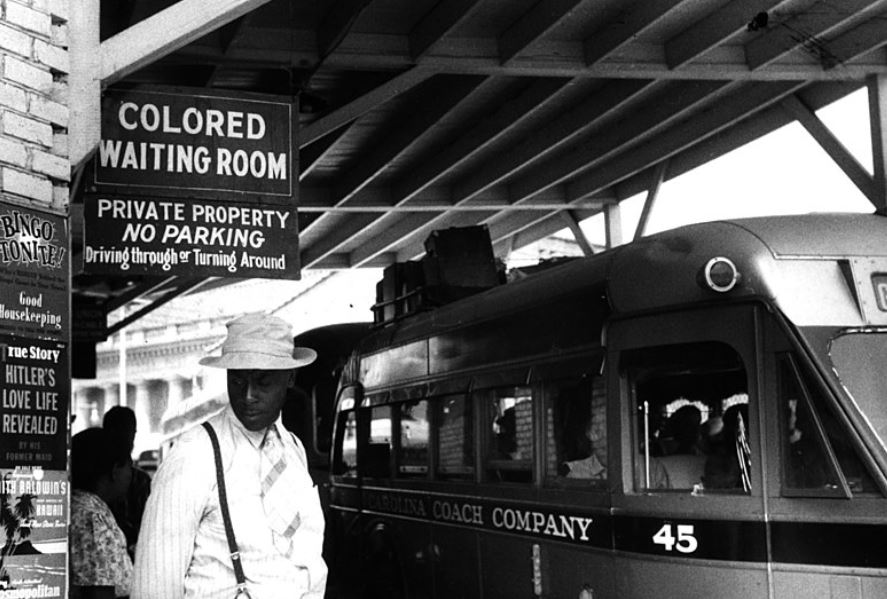
Black Americans, denied basic rights and opportunities, were portrayed as the problem, not the victims, of a failed system.
The Lost Cause myth wasn’t just a passive observer; it was an active participant in perpetuating Jim Crow. It fueled resentment among white Southerners, which in turn fueled violence and intimidation tactics to enforce Jim Crow’s stranglehold on the South.
8. The Stubborn Persistence of the Lost Cause Mythology
Despite overwhelming historical consensus today that the South’s defense of slavery was the primary cause of the Civil War, Lost Cause myths emphasizing states’ rights stubbornly persist in public understanding of the conflict.
For example, a 2011 Pew Research Center poll, found that 48% of respondents believed that states’ rights was the main cause of the Civil War. Just 38% agreed that cause of the Civil War was slavery. Only 9% said it was a mixture of both.
Many defenders of Confederate monuments echo this theme, claiming the war was about abstract constitutional principles rather than the cruelty of human subjugation.
The downplaying of slavery in sparking the war contributes to the dangerous erasure of America’s histories of racial injustice.
The persistence of Lost Cause mythology reflects how deeply its narratives infused American culture and identity.
It will likely require generations more of intentional remembering, learning, and confronting hard truths before the falsehoods of the Lost Cause are fully removed from society’s understanding of the Civil War.
Further Reading
If you enjoyed this article, you may be interested to read more about the causes of the American Civil War events, or perhaps read about the how the North won the war or what would have happened had the South won. Read here for more general American history.

